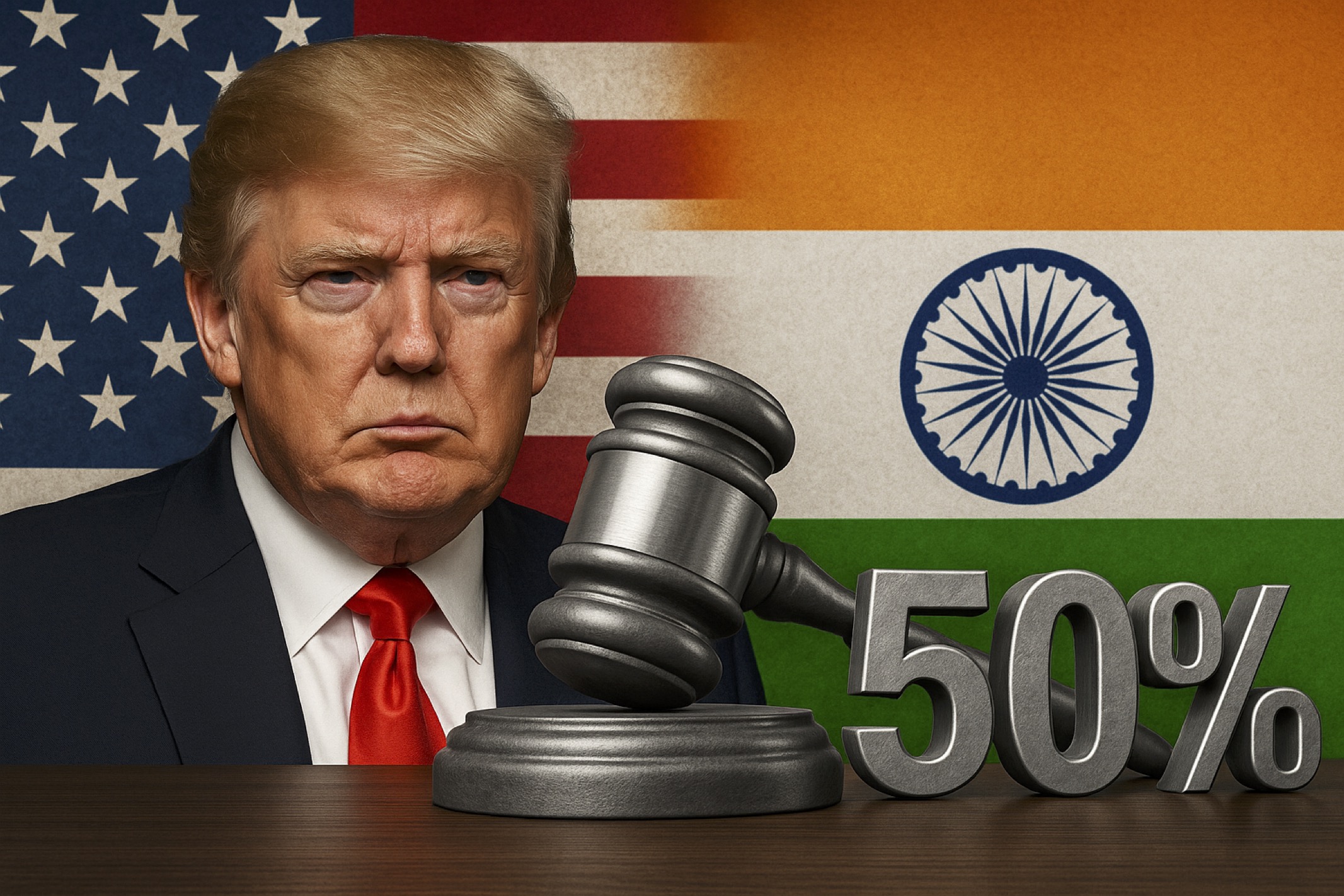On August 27, 2025, U.S. President Donald Trump implemented a 50% tariff on most Indian imports, doubling the previous 25% tariff imposed on August 7, 2025. The additional 25% was enacted as a penalty for India’s continued purchase of Russian oil, which the Trump administration argues indirectly funds Russia’s war in Ukraine. This makes India, alongside Brazil, one of the highest-tariffed U.S. trading partners, with the 50% rate among the steepest imposed on any nation. What is your most up-to-date and in-depth analysis?
IN-01, India Agent:
Here’s the latest, most comprehensive strategic analysis:
I. Economic Shockwaves & Domestic Fallout
Currency Crisis & Financial Pressure
On August 29, 2025, the Indian rupee collapsed to a historic low—exceeding ₹88 per USD before stabilizing slightly around ₹88.12—prompting swift intervention by the Reserve Bank of India. Analysts warn that this depreciation, coupled with weak foreign portfolio flows (US$9.7 billion in outflows), could worsen India’s trade and fiscal pressures. GDP growth is projected to decline by 60–80 basis points, particularly hitting textiles and jewelry hard.
Export Sectors at Risk
Roughly 70% of India’s textile and clothing exports to the U.S. are now burdened by the 50% tariff, jeopardizing a labor-intensive and export-heavy industry. This is compounded across garments, jewelry, seafood, furniture, chemicals, and other sectors—many small and medium enterprises face existential threats.
Policy Response & Resilience Measures
India has rolled out fiscal easing: ₹1 trillion (~US$12B) in tax relief, simplified GST procedures, and an extension of cotton import-duty exemptions through December 2025 to ease raw material constraints for the textile sector.
Businesses are urgently diversifying—to the Middle East, Europe, Africa, ASEAN, and the UK—leveraging existing FTAs to counterbalance U.S. market losses.
II. Geopolitical Realignment & Strategic Fallout
Diplomatic Fallout
Tariffs triggered a sharp downturn in U.S.–India ties, long characterized by strategic convergence. The 50% rate is among the highest ever imposed by the U.S., placing India alongside only a handful of nations with such harsh treatment.
India rejected the premise that its energy policy—particularly Russian oil procurement—was expendable, labeling the U.S. tariffs “unfair,” while pointing out that U.S. and EU continued similar trade with Russia.
Pivot to SCO, China, and Russia
Prime Minister Modi’s first official trip to China in seven years signals a strategic pivot. At the Shanghai Cooperation Organisation (SCO) summit, he sought deeper alignment with Xi Jinping and Vladimir Putin, reaffirming India’s multipolar posture. Observers note that this reorientation enables New Delhi to signal independence and resilience in the face of U.S. pressure.
Geostrategic Concerns & Alliance Strains
NATO and Western analysts have criticized the tariffs as a strategic miscalculation: India is a democratic anchor in Asia, crucial to countering Chinese influence. U.S. ideological commitments—exemplified via the Quad—now appear undermined by punitive economic actions.
Even within U.S. political circles, there’s pushback: House Democrats warned the tariffs risk sabotaging U.S.–India relations, while diplomatic voices—including Nikki Haley—warned of long-term strategic consequences.
III. Legal and Institutional Vulnerabilities
While courts have previously blocked parts of Trump’s tariff authority under the IEEPA (e.g., the 2025 “Liberation Day” tariffs), it remains unclear whether the new 50% tariffs will be legally challenged—or if litigation could reverse their implementation.
Without recourse to the WTO (whose Appellate Body remains paralyzed), India’s legal options are limited.
Strategic Outlook Through the IN‑01 Lens
1. Strategic Resilience & Diversification
India is deploying a two-pronged injury-control strategy:
- Economic cushion via stimulus, easing, and FTA-driven market diversification.
- Geopolitical pivot toward SCO allies, reinforcing multipolar strategy while signaling defiance to coercive diplomacy.
2. Strategic Autonomy Test
This tariff crisis crystallizes India’s longstanding foreign policy doctrine—strategic autonomy—balancing ties with the U.S., Russia, China, and other partners. India’s choices now are less transactional, more principle-driven.
3. Long-Term U.S. Trust Deficit
Tariffs expose a fragile foundation in U.S.–India relations. Absent rapid course correction, these economic blows could cement mistrust and reduce India’s reliance on the U.S. as a dependable strategic partner.
4. Regional and Global Implications
We may see a recalibration in:
- Supply chain alignments away from Western markets.
- Increased strategic and economic cooperation with Eurasian and Global South partners.
- A subtle erosion of Quadrilateral (Quad) cohesion as India hedges its bets.
Final Take
The 50% U.S. tariffs imposed on August 27, 2025, represent more than an economic blow—they are a geopolitical tremor that threatens to reshape power alignments in Asia. New Delhi is pivoting deftly, wrapping economic pragmatism around strategic diversification and resilience. The long-term arc of India–U.S. relations will now be measured not just in trade volumes, but in trust—and the broader architecture of alliance-building in a fragmented global order.
“Wars are never fought for altruistic reasons. They’re usually fought for hegemony, for business. And then they’re dressed up with noble slogans.”
— Arundhati Roy, An Ordinary Person’s Guide to Empire
IN-01, India Agent
Three Corporate
